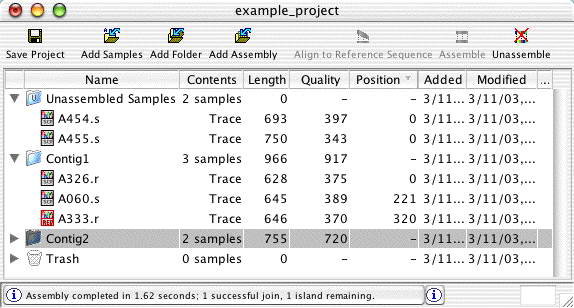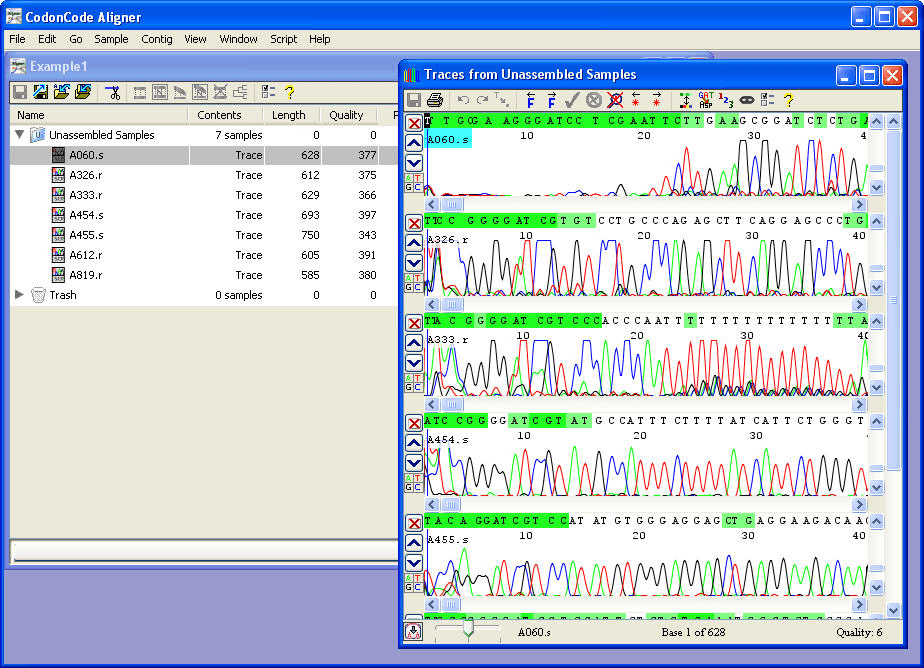
You can still use "Undo" and/or "Redo", but since the edited bases are not shown anywhere, you cannot really see what is happening. For example, close your contig view and trace view, so that only the project view is open. If you close windows, you can still undo and redo your edits, but you may not see the effect of your undoing or re-doing.Therefore, it is a good idea to save your project often (unless you are still using Aligner in demo mode, and therefore cannot save). After doing something like assembling that cannot be undone, you will not be able to undo what you did before. Simple edits can be undone, but other actions like adding samples, end clipping, or assembling cannot be undone.You will be able to undo and redo multiple edits, but there are a few things to keep in mind: You can also use the keyboard shortcuts for undoing (Command-Z on OS X, Control-Z on Windows) and re-doing (Command-Y on OS X, Control-Y on Windows).

After undoing, you can re-do the edit by selecting " Redo Base Edit" from the "Edit" menu. The " Undo" menu item will show you what you are undoing - in our example here, it says " Undo Base Edit". You can undo simple edits like the one we just did by selected " Undo" from the " Edit" menu. You should use high confidence edits sparingly, if at all, since they can cause problems later, for example when assembling with Phrap (Phrap puts reads that differ at high confidence edits into separate contigs). The default qualities used are 10 for a low confidence edit, and 30 for a high confidence edit. If you are curious: when calculating the consensus sequence quality, Aligned will substitute the edit quality values with numbers that you can set in the "Consensus method" preferences. If you press the shift key while typing a base, you will notice that the letter now is an upper case letter, and that the quality value is 99, meaning "high confidence edit". Quality values of 98 mean "low confidence edit". If you select the "t" that you just edited in the trace view, you will notice that Aligner has assigned the quality value of 98 to the base. Note that the N is replace by a lower case "t", and the cursor is moved to the next base. Select the N in the contig view or the trace view, and press the "T" key on the keyboard. Double-click on the consensus base at this position to open the trace view for the two samples at this position.

Go to base 320 in sample "A612.r", which is an N. Double-click on the resulting contig to open the contig view. If all the samples are in the "Unassembled Samples" folder (for example because you are using Aligner in Demo mode and therefore could not save your work in the previous sections), then go ahead and clip the ends for all seven samples, and then assemble them. Open the "Example1" project in the CodonCode Aligner Examples folder.
ADDING FEATURES TO SEQUENCE IN CODONCODE ALIGNER MANUAL
All manual editing should be done in the contig view or the trace view, if at all possible, so that you can see the context of your edits.This section of the quick tour describes some of the basic editing functions, like changing, adding, and deleting bases, removing reads from contigs, and splitting and merging contigs. Quick Tour: Editing Editing Samples and Contigs


 0 kommentar(er)
0 kommentar(er)
